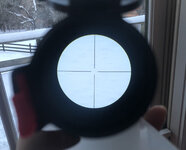Hunting and competition are potentially time sensitive environments, with high value targets. I prefer to keep my systems simple, but options to dial/hold ele or wind open. So a well designed reticle, in FFP MRAD for me. Every single time.
Wind also becomes a LOT less voodoo with a straight forward setup and practice.
Wind also becomes a LOT less voodoo with a straight forward setup and practice.


